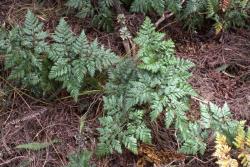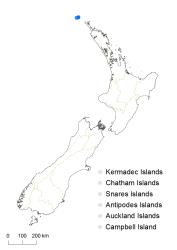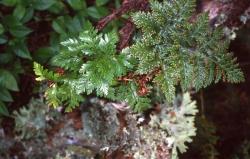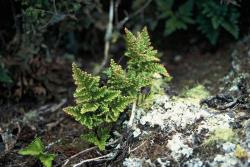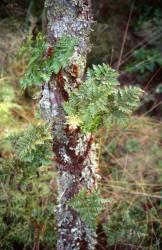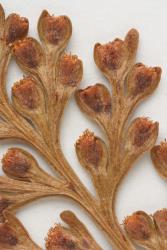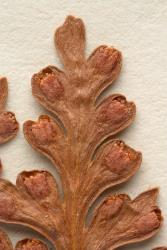Rhizome scales bearing setae and multiseptate hairs along both margins from base to apex. False veins in ultimate lamina segments absent or faint, rarely extending halfway along length of true veins from their junction to their ending. Ultimate lamina segments bearing 1 to several sori; apices of segments usually notched or bidentate.
Davallia tasmanii subsp. tasmanii is most easily distinguished by its rhizome scales, which bear multiseptate hairs along both margins from base to apex, whereas multiseptate hairs are confined to the apices in D. tasmanii subsp. cristata (see von Konrat et al. 1999, fig. 4).
Three Kings Islands.
Altitudinal range: 30–220 m.
Davallia tasmanii subsp. tasmanii is endemic to the Three Kings Islands, where it is known from Great, North East, West and South West Islands (von Konrat et al. 1999).
Davallia tasmanii subsp. tasmanii is primarily a terrestrial species found on rocky banks, rock outcrops and scree slopes in exposed coastal situations, scrambling over fallen trunks and boulders, under coastal scrub, on forest margins, or under kānuka forest. It favours drier, more open sites. Very occasionally it is also found as a low epiphyte.
Davallia tasmanii subsp. tasmanii was given a conservation status of Naturally Uncommon by de Lange et al. (2013).
n = 40 (Brownlie 1961); 2n = 80 (von Konrat et al. 1999).



